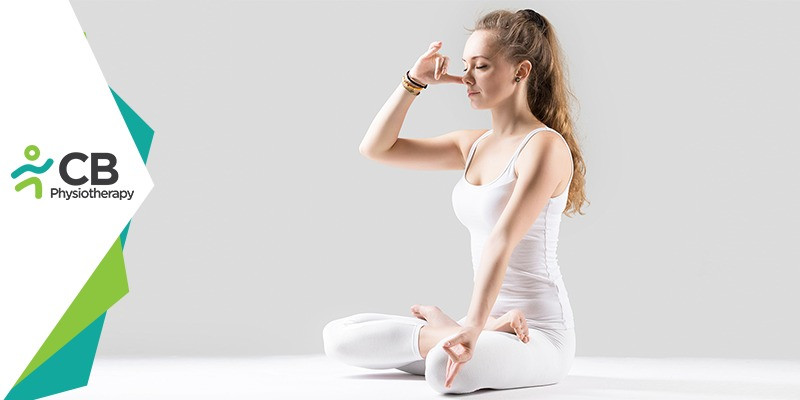After recovering from COVID-19, breathlessness, and fatigue are long-term complications that need treatment. It occurs due to the decrease in the oxygen supply to the body. Oxygen breaks down glucose and stores the generated energy in cells and muscles. When the body has a sufficient supply of oxygen, the muscles have more energy stored which increases your lung endurance. Breathing exercises steadily increase lung capacity and also increases the lungs' ability to maintain a sufficient supply of oxygen over time. Respiratory muscles help in the process of inhalation and exhalation by causing the expansion and contraction of the chest. The diaphragm, the internal intercostals, and the external intercostals are the prime muscles that help in respiration. Other accessory muscles are used only during vigorous physical activities causing the rib cage to lift so that the lungs can expand and take in more air. In this blog, we will provide you with self-care breathing strategies that will help you to promote lung function and capacity.
· Simple deep breathing Exercise:
Start with a simple deep breathing exercise. Lie on a bed in a relaxed and comfortable position. Put one hand on your belly and the other hand on your chest to feel the movement during inhalation and exhalation. Take a deep breath, through your nose, filling up your lungs. Exhale and empty. Relax and repeat.
· Flower smelling Exercise:
Hold a flower in your hand and smell it. Take a slow and deep breath in through your nose and exhale out slowly through the mouth.
· Candle blowout Exercise:
Blow out the candles as you blow on your birthday cake, draw in a deep breath through the mouth, and blow it out strongly through the mouth.
· Flower smelling and Candle blow out Exercise:
Hold a flower in one hand and a candle in the other hand. First smell the flower, take a deep breath through your nose, filling your lungs with air. Next, exhale and blow out the candle.
· Sniff Breathing Exercise:
Sit in a relaxed position cross-legged. Sniff deeply 4-5 times through the nose, with each sniff, exhale and repeat. Sniff deeply 4-5 times through the nose and one long exhales out through the mouth.
· Snake breathing Exercise:
Sit in a relaxed position one hand on the belly to feel the movement of the diaphragm. Take a deep breath slowly through your nose filling your lungs with air and slowly hiss out the breath with a long exhale through the mouth.
· Blowing bubbles breathing Exercise:
Softly take a deep breath and hold it for 1 second, then slowly blow out to create bubbles.
· Balloon breathing Exercise:
Hold a balloon in your mouth take a deep breath through your nose hold the breath for 3-4 seconds then blow up the balloon for 6-8 seconds.
· Deep belly breathing Exercise:
Lie on the bed with your legs extended, placing one hand on your belly and one hand on your chest to feel the movement of the diaphragm and lungs. Take a deep breath in through your nose for 4 seconds and then exhale slowly through the nose for 4 seconds. Observe the chest and belly rise and fall as you do this exercise.
· Book breathing Exercise:
Lie down flat on the bed, and put a book on your belly. Breathe in, see the book moving up, then breathe out, bringing the book down. The movement of the book helps you to use your bell to take big deep breaths.
· Bumble bee breathing Exercise:
Take a deep breath through your nose, keeping your mouth closed. Next, with the mouth still closed, make a humming or buzzing noise as you exhale. You can also cup your hands around your ears to increase the buzzing sound.
· Tumble dryer Breathing Exercise:
Sit cross-legged in a comfortable position. Point your index fingers toward each other in front of your mouth. Inhale deeply through the nose, and exhale through the mouth, swirl the fingers around like a tumble dryer. You can feel the swishy noise while you exhale.
· Dragon fire breathing Exercise:
Interlace your fingers under your chin, and as you inhale, raise your elbows as high as you can around your neck and face. While exhaling, lower your elbows back down.
· Shoulder roll breathing Exercise:
Sit comfortably, as you take a deep breath in, bring or roll your shoulders up toward the ears, and then drop them back down on while you exhale.
· Straw breathing Exercise:
Put a straw in your mouth and breath in through it for 3-4 seconds, as if you are sipping in water. Gently breathe out through your nose and relax. Now exhale through the straw as if you are creating bubbles in the bowl filled with water. Do this for 3-4 seconds and relax.
People with normal lung function and capacity may not have any problem performing these exercises. However, people with lung problems such as pulmonary fibrosis, COPD, and asthma may feel difficulty in performing the exercises.

